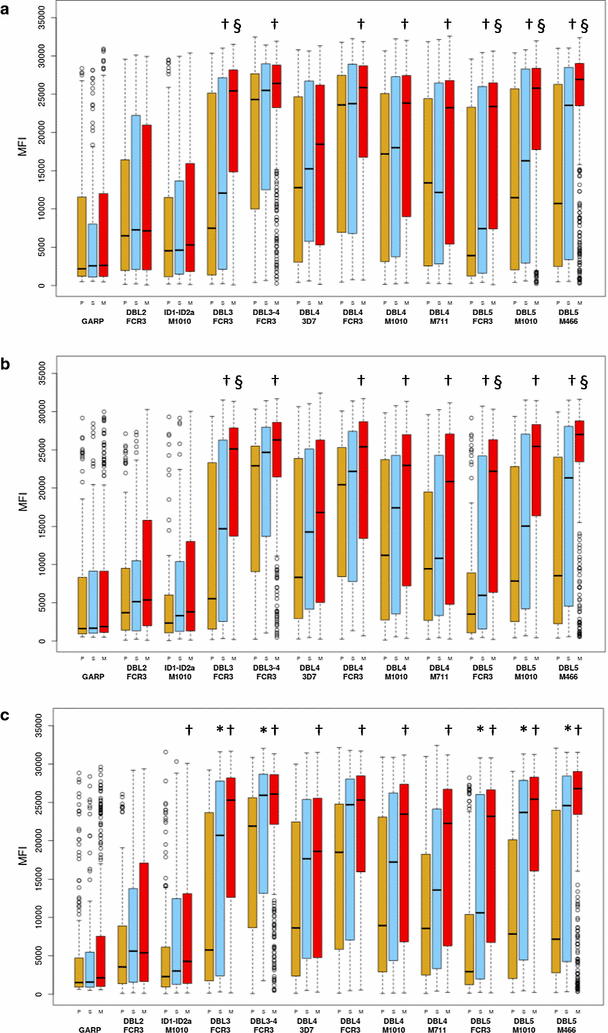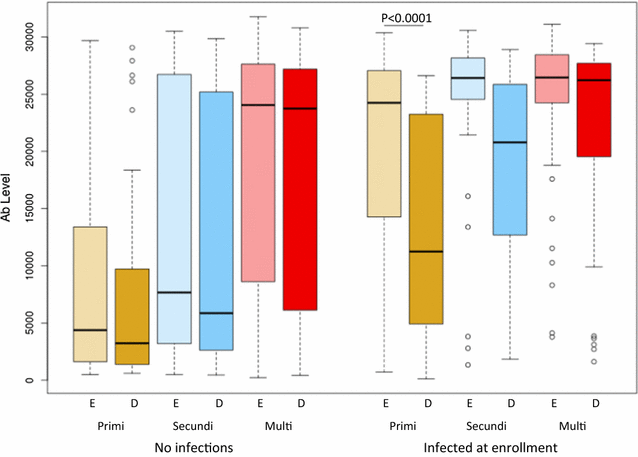Antibody levels to recombinant VAR2CSA domains vary with Plasmodium falciparum parasitaemia, gestational age, and gravidity, but do not predict pregnancy outcomes
- PMID: 29523137
- PMCID: PMC5845157
- DOI: 10.1186/s12936-018-2258-9
Antibody levels to recombinant VAR2CSA domains vary with Plasmodium falciparum parasitaemia, gestational age, and gravidity, but do not predict pregnancy outcomes
Abstract
Background: Maternal malaria is a tropical scourge associated with poor pregnancy outcomes. Women become resistant to Plasmodium falciparum pregnancy malaria as they acquire antibodies to the variant surface antigen VAR2CSA, a leading vaccine candidate. Because malaria infection may increase VAR2CSA antibody levels and thereby confound analyses of immune protection, gravidity-dependent changes in antibody levels during and after infection, and the effect of VAR2CSA antibodies on pregnancy outcomes were evaluated.
Methods: Pregnant women enrolled in a longitudinal cohort study of mother-infant pairs in Ouelessebougou, Mali provided plasma samples at enrollment, gestational week 30-32, and delivery. Antibody levels to VAR2CSA domains were measured using a multiplex bead-based assay.
Results: Antibody levels to VAR2CSA were higher in multigravidae than primigravidae. Malaria infection was associated with increased antibody levels to VAR2CSA domains. In primigravidae but not in secundigravidae or multigravidae, antibodies levels sharply declined after an infection. A relationship between any VAR2CSA antibody specificity and protection from adverse pregnancy outcomes was not detected.
Conclusions: During malaria infection, primigravidae acquire short-lived antibodies. The lack of an association between VAR2CSA domain antibody reactivity and improved pregnancy outcomes suggests that the recombinant proteins may not present native epitopes targeted by protective antibodies.
Keywords: Anaemia; Birth weight; Placental malaria; Pregnancy loss; Preterm delivery; VAR2CSA.
Figures



References
-
- Barfod L, Dobrilovic T, Magistrado P, Khunrae P, Viwami F, Bruun J, et al. Chondroitin sulfate A-adhering Plasmodium falciparum-infected erythrocytes express functionally important antibody epitopes shared by multiple variants. J Immunol. 2010;185:7553–7561. doi: 10.4049/jimmunol.1002390. - DOI - PMC - PubMed
MeSH terms
Substances
LinkOut - more resources
Full Text Sources
Other Literature Sources
Medical

